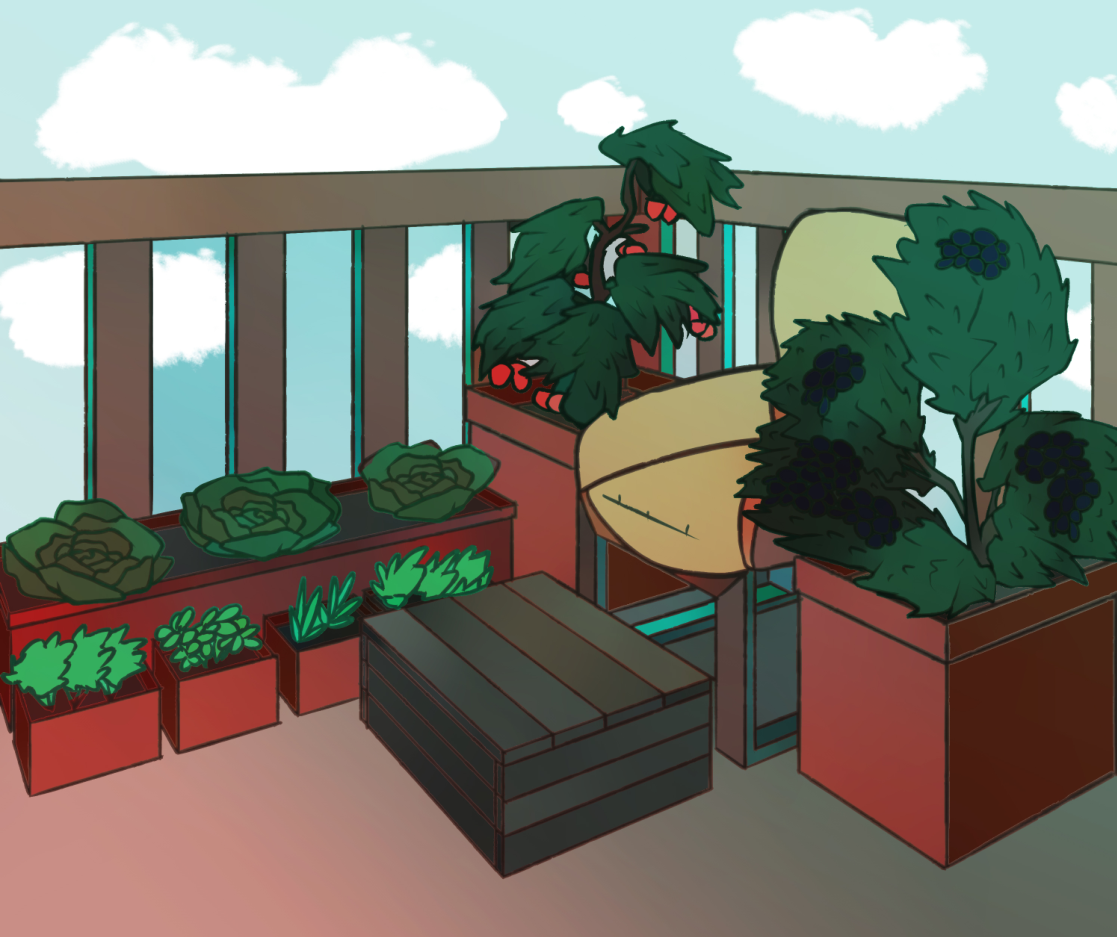Has anyone else been disgusted by documentaries on Netflix about the ugly side of the food industry? Films such as Food Inc. and Cowspiracy show us cows being fattened by corn, chickens being crammed into tiny cages to lay their eggs on conveyor belts, mistreatment of farmers, vegetables being sprayed with every pesticide imaginable, and the incredible amount of food and biochemical waste this industry creates.
In every area of my life I strive to be intentional with the products I consume, whether it be clothes, coffee, or groceries, and to support the most ethical companies while doing so. You may be thinking this is hard to do on a student’s budget, but I assure you it is not. It is a matter of realigning your priorities to what matters the most to you. We have the choice of where to spend our most precious resources: time and money. So why not take up a hobby this summer that is beneficial to your health and wallet plus gives you the satisfaction of watching plants creating food right before your eyes?
So what if you don’t have the space for a garden? If you don’t have access to some kind of yard to build a plant bed in, you’re not out of luck: if you have a deck or balcony you can always start a container garden. A quick search on Facebook Marketplace or Craigslist reveals an abundance of plant pots to fill with soil and seeds. Even some five-gallon plastic buckets will do to grow plants in if you punch a couple holes in the bottom to allow for drainage. Container gardening has the advantages of not having to weed very much and lessens the risk of plants contracting diseases; and of course the advantage of being able to grow a wide variety of plants in a small space. Some of the easiest plants to grow in buckets are arugula, chard, kale, lettuce, and peppers because of their shallow roots and fairly fast growing time. You could even channel your inner Dwight Schrute and try your hand at growing beets, but in buckets instead of a massive beet farm. But don’t stop there! Why not fill up more buckets with onions, carrots, or cucumbers? To go to the next level, plant some yardsticks in the bucket to enable vertical plants like green beans or tomatoes to grow.
You should start by doing a little research on successful growing tactics for each plant, since some require different soil and fertilizer than others. But it really is as simple as planting the seed in the right soil and diligently watering and singing to the precious seeds until they sprout into beautifully yummy produce, ready to be chopped up into a salad, roasted with garlic butter, or sauteed into a stir-fry.
Are you still a little anxious about starting an entire vegetable garden? Why not green up your thumb by beginning with a small, indoor herb garden. All you need for that is a sunny window sill, containers filled with potting soil, and some seeds to get started. The great thing about growing your own herbs is that you can continue to grow them all year round, not just in the beautiful summer months. So whether you grow basil, chives, oregano, mint, or rosemary in your tiny containers on a windowsill, be sure to post it on Instagram to show off how nurturing you are toward living organisms.
If you live in a cold, damp basement suite with no natural light, do not fear; I have not forgotten you or your food-growing capabilities. You could try the most simple of gardening techniques: sprouting. All you need are some seeds or legumes (alfalfa, lentils, or mung beans all work great) and a mason jar covered with a small piece of breathable fabric, such as cotton or cheesecloth. First, soak your seeds for about eight hours to allow them to properly germinate, then rinse the seeds and tilt the mason jar upside down into a bowl to allow for drainage. Now all you need to do is revisit your sprouts twice a day to rinse, drain, and repeat. Give it about four days and you should have a good amount of sprouts to use in salads, put on your sandwich, or just throw in any dish you want to add a little more fibre to.
Gardening is one of the most satisfying hobbies since you can literally see and taste the fruits of your labour. After enjoying your windowsill herbs and harvesting your vegetables grown in buckets that once contained a sickly amount of mayonnaise, you might realign your priorities to one day live somewhere you can expand your abilities into growing fruit trees, or building a chicken coop or even a greenhouse. You could even consider growing some medicine; Canadians can legally grow up to four cannabis plants per resident per household. May your summer be bountiful, fruitful, and full of sunshine.
Image: Kayt Hine/The Cascade
Andrea Sadowski is working towards her BA in Global Development Studies, with a minor in anthropology and Mennonite studies. When she's not sitting in front of her computer, Andrea enjoys climbing mountains, sleeping outside, cooking delicious plant-based food, talking to animals, and dismantling the patriarchy.


